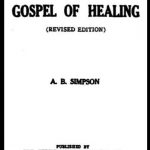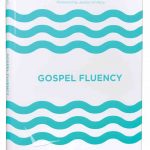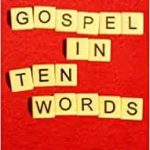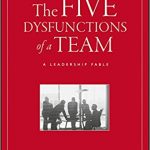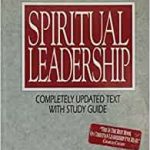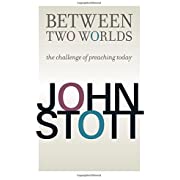 John Stott’s Between Two Worlds: The Challenge of Preaching Today is a solid book for any new preacher. I feel like it could easily be a textbook for new preachers, but probably equally serves experienced preachers, too. The book covers just about every aspect of preaching that one could image.
John Stott’s Between Two Worlds: The Challenge of Preaching Today is a solid book for any new preacher. I feel like it could easily be a textbook for new preachers, but probably equally serves experienced preachers, too. The book covers just about every aspect of preaching that one could image.
Even though I felt that the book started off slow, Stott quickly jumps into the practical applications of preaching.
The premise of this book is that when Jesus lived, when the early church began, and when the Old Testament was written were all a completely different world than what we live in today, and it is primarily the preachers’ responsibility to bridge the gap between these two worlds.
Here are some quick highlights I found helpful:
On page 34, Stott had developed the concept that we live in an anti-authority culture. So, he addresses what the Christians response should be in such an environment. Should we abandon preaching since people are less likely to be open to authority? Stott argues that the nature of humans is to be morally responsible while still being free. Secondly, we should recognize that God is the ultimate authority, revealing things to mankind through Scripture. Lastly, Stott argues that the Gospel will always remain relevant, changing peoples’ lives.
Page 38, “One of the greatest gifts a preacher needs is such a sensitive understanding of people and their problems that he can anticipate their reactions to each part of his sermons and respond to them.”
Pages 46-47, Stott talks about the “TV Church” and the “electronic church.” This portion is especially interesting since, after the pandemic, many people have chosen to worship only online. Stott argues that TV church causes people to be physically lazy, intellectually uncritical, emotionally insensitive, psychologically confused, and morally disordered.
Page 52, Stott talks about how their church in London has done “teach-in” sessions after a particularly hot topic or after a full series. He would invite the entire church to bring a bag lunch and join in a discussion after the regular worship service.
Pages 91-98, Stott makes an argument as to why expository preaching is best. He says it sets limits, demands integrity, identifies pitfalls, and gives us confidence to preach.
At the bottom of page 101, Stott introduces the “Bridge building” concept of preaching. He says that a bridge is a means of communication between two places which would otherwise be cut off from one another by a river or a ravine. There is a great chasm between the ancient biblical world and the modern world. Preaching can provide the bridge between them.
Page 147, Stott urges preachers to be well-informed about our current culture. Watch television, peruse the secular book reviews and read the popular books, and see some of the most notable films and plays. Being informed about culture allows the preacher to connect with the people living in the current culture.
Page 156, Stott argues for a minimum amount of personal reading and development time: every day at least one hour; every week one morning, afternoon, or evening; every month a full day; every year a week.
Chapter six, starting on page 162, is probably the most helpful, applicable chapter of the book. When a preacher reads a book on preaching, they most likely want to know about sermon preparation. So, if you’re not much of a reader, or just want to get to the “good stuff,” chapter six is where it’s at.
Page 170, Stott writes on the importance of meditating on Scripture before preparing the message. He then goes on to instruct the preacher to ask “what DID it mean” when it was first written/spoken. Then, the preacher should ask “what does it say?”
Page 225, Stott talks about the use of humor in sermons. He says that there are certainly times when humor would not be appropriate, but used correctly, humor has its advantages. Humor breaks tension, and it breaks down people’s defenses.
Page 247, once again, Stott urges preachers to preach expositionaly, preaching through entire books of the Bible. This style forces preachers to take on passages that we might otherwise overlook. The second benefit is that it diminishes curiosity from the congregation as to why certain sermon topics have been chosen.
In summary, I would highly recommend this book to inexperienced preachers, and since I am not an experienced preacher, I cannot fully recommend this to experienced preachers, but I would have a hard time believing that you wouldn’t gain something that would benefit your time in the pulpit.
If my review/summary was helpful and you are interested in purchasing Between Two Worlds by John Stott, you find it on amazon here.

